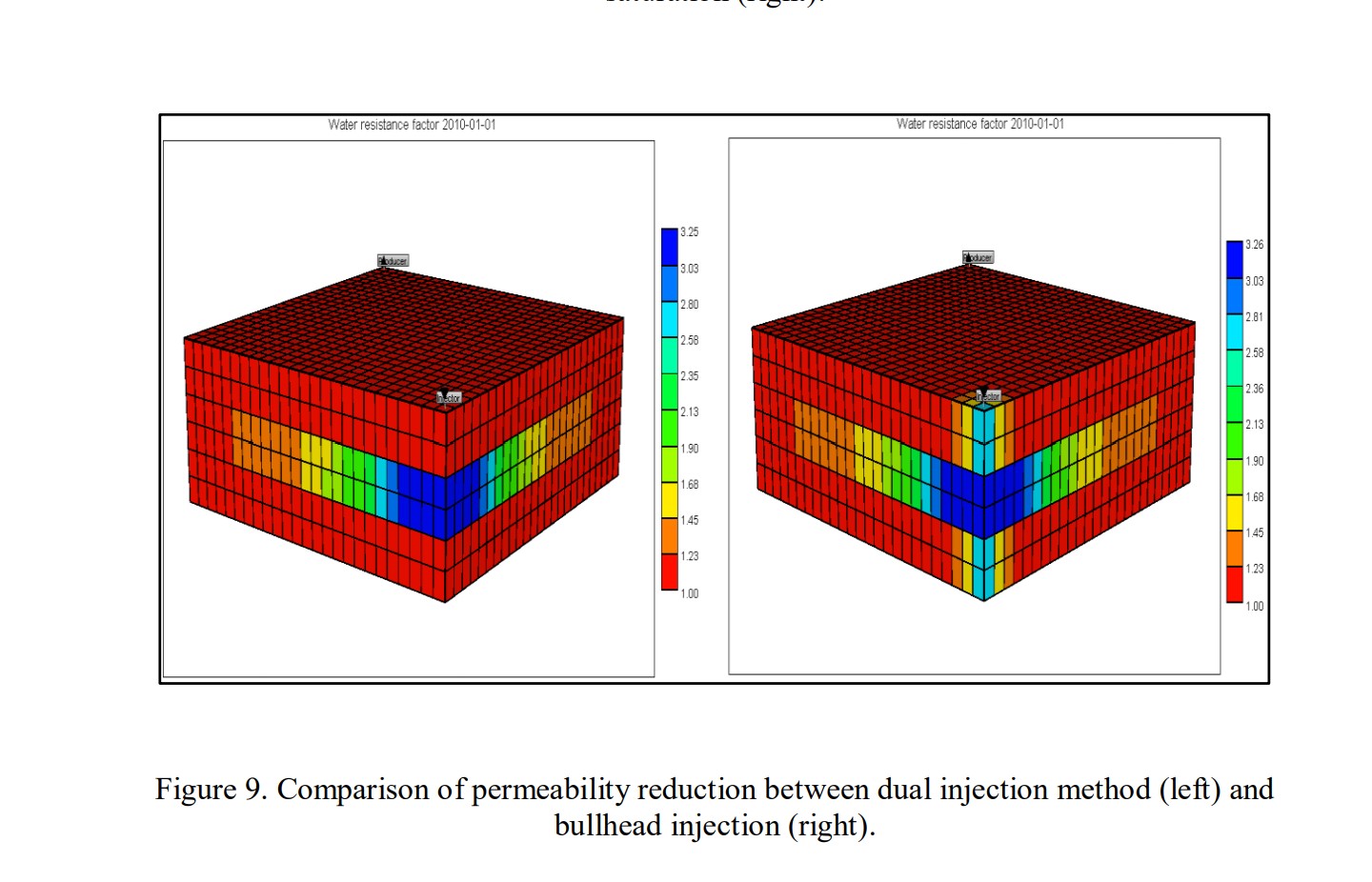Evaluation of the performance of different polymer gel systems as an in-depth gel treatment using numerical simulation
CMG软件的应用情况:
作者单位:
ABSTRACT
Oil production from heterogeneous and naturally fractured reservoirs are usually hindered due to the presence of high-permeability streaks and natural fractures networks. Oil production could be more lowered if there is a crossflow from the high- to the low permeability layers and high mobility ratio. These problems are called conformance problems and the treatment is called conformance improvement technologies (CITs). The aims of CIT is to correct the heterogeneity of the reservoir and to lower the unfavorable mobility ratio. These technologies are leading to the diversion of post-treatment water into the low-permeability layers and to increase the viscosity of the displacing fluid (e.g., water). Therefore, overall sweep efficiency, could be improved and an enhancement to oil production could occur.
Assessment of the potential of polymer flooding and gel treatment requires accurate modeling of different parameters that could affect these processes. Selecting of the best
polymer gel system requires an understanding of its performance inside the reservoir. The main aim and principle contribution of this work is to build different models to simulate the performance of in-depth gel treatment with different scenarios and different gel systems, using different reservoir simulators.
In this study, we developed a separate model for each polymer gel system that has been investigated. Different parameters have been scrutinized and the optimum parameters
have been concluded. By knowing these optimum parameters, a successful application of each polymer gel system could lead to maximum benefits and maximum oil production.



